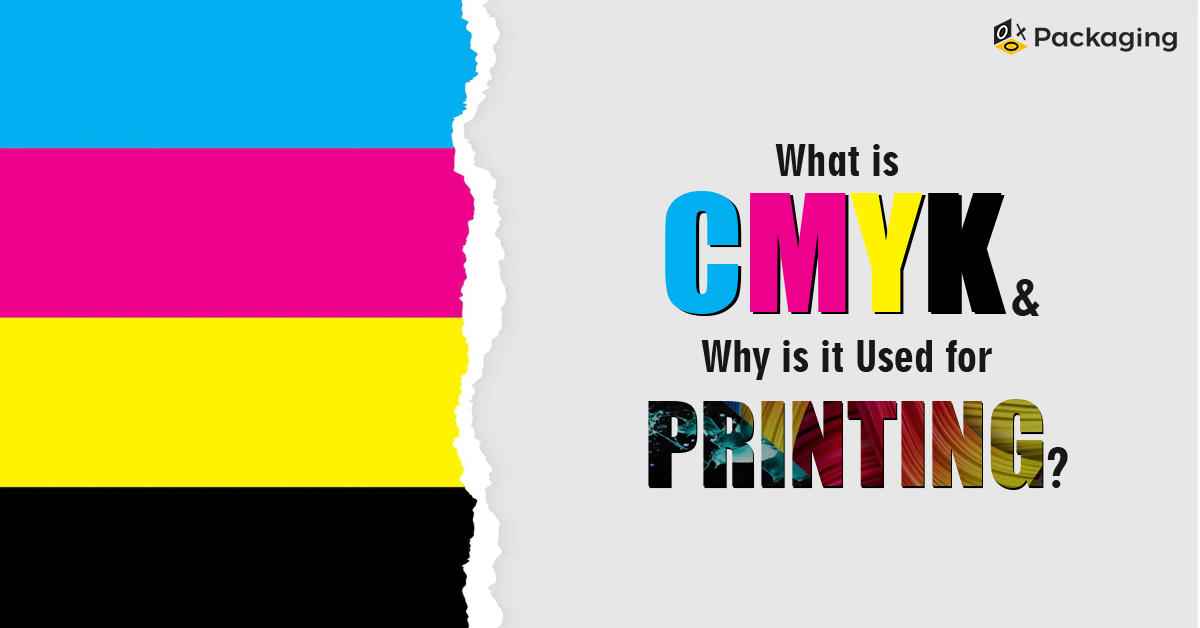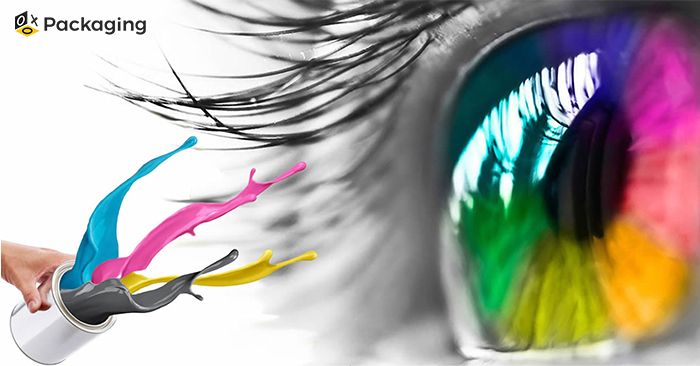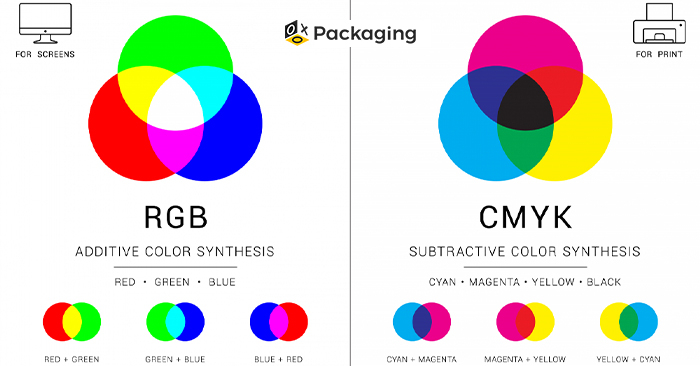What is CMYK and Why is it Used for Printing?

CMYK is a popular color model that most commercial printing services use around the globe. If you have ever used a commercial print service, you might have heard about CMYK. And your mind might have questions like, "What is CMYK?" and “What does CMYK stands for?” and many more. So here are the answers to all your questions. This article will cover everything you want to know about printing with the CMYK color model. So, without further ado, let’s get started.
What Is CMYK in Commercial Printing?
CMYK is a widely used printing technique for commercial printing in the US and around the world. The acronym CMYK stands for 4 different colors used in printing, i.e., Cyan, Magenta, Yellow, and Key. These four colors are used to create different color shades for perfect printing.
What Is “Key” In CMYK?
Wondering what the “K” for “Key” in CMYK is? The K is actually Black. It is the key color in printing because it determines the printing outcome. Black ink in printing provides depth and shade, while the other 3 colors are used to make different colors on the spectrum.

Why Is “Key” Used To Identify Black?
There are various theories regarding the origin of the word ‘key’ in CMYK. Some say it is called key because using B for Black would confuse it with Blue. Another theory suggests that it is because of the placement of the plates in the printing machine. The black plate is the key plate on a printing press that aligns the other three colors. This suggests that any color plate could be the key if black isn’t used.
Some people also suggest that the use of key for black dates back to the early printing technique from the 1800s. It is from the time when screw keys were used in printing presses to determine the amount of ink required for printing. Whatever the case might be, we still use it to identify black.
Our Theory Regarding the Matter:
Our theory is that black is the primary color and deciding factor in the output result of your printing process, as it is the darkest color on the spectrum. Other colors also have their role but not as much as black. It determines the shade and the depth of the output color in printing. So even a tiny mess up with black can cause a significant shade difference with the result.
Also, another reason black may be the key color is that if you mix the other three colors, i.e., cyan, magenta, and yellow, they form black. Although, due to the impurities in ink, you might not get pure black. But still, it is a lighter shade of black. So this can be another reason for black being the key color.
RGB Color Model:
Have you ever printed something in your home or office printer and seen the colors look slightly off? This can happen when using an RGB color model for printing. RGB is another color model like CMYK used to create digital images and non-print graphics. Why non-print? Because printers use CMYK models and cannot print RGB colors correctly.
RGB has a very broad color spectrum than CMYK colors. Therefore, many colors in RGB are not present in the CMYK spectrum. This is why the printer may be unable to identify the colors and print a different shade. Like many other printing and packaging companies, OXO Packaging uses the CMYK color model to ensure you get the right colors.
RGB colors are known as additive colors, while CMYK colors are known as subtractive. Let’s check additive and subtractive in detail to know better.
Additive Vs. Subtractive Colors:
RGB colors are known as additive colors. This means they start of black and then keep going lighter when colors are added to make your preferred colors.
On the contrary, CMYK colors are subtractive, meaning the background starts off white, and as color is added, they keep going darker.
Additive and Subtractive are the opposite of each other. When RGB colors are mixed, they make white; when CMYK colors are combined, they produce black. Hope you understand how the process works.
RGB Vs. CMYK:

Here is a comparison chart to help you better understand the difference between RGB and CMYK.
|
CMYK |
RGB |
|
|
|
|
|
|
|
|
|
|
|
|
Why Do Printers Use CMYK Colors?
When printing quality is the primary focus, using CMYK is the best way. While some commercial printers may use RGB to print your designs, most, including OXO Packaging, use CMYK to do right by the colors. As we mentioned earlier, RGB has a broad spectrum, making it almost impossible to maintain the color scheme during printing. Most printing techniques like offset printing require the use of CMYK colors to get the best output. Read the process of offset printing to know better about this printing technique.
With the narrow spectrum of CMYK, it is easier to maintain color consistency in your prints. When you use RGB, even the minute variations can cause a blunder in the output. So to maintain consistency in printing, most other companies and we use CMYK colors.
Also, when printing on a white surface (as is often the case), going with CMYK greatly helps. Because you are printing on white, going with darker colors is always the best technique to avoid color variations.
Also, if you have a design for printing that uses true black color, CMYK would be the right choice to print it. If you take the four colors of CMYK at 100%, they will form true black. Although impurities in the inks may cause the color to appear faded, We have noticed that using the colors at a percentage of C (100), M (100), Y (100), and K (30) can produce an excellent shade of black for printing.
So these are a few reasons why commercial printers use CMYK instead of RGB. If you want your print job done correctly, convert your RGB designs to CMYK. Let’s see how you can convert your artwork.
How To Convert RGB To CMYK?
If you have prepared artwork for printing, convert it into CMYK before sending it out to print. Most editing software like Adobe Photoshop would create a design in RGB. You need to convert it to ensure you get the right colors in print.
You can easily convert RGB to CMYK with editing software. For example, if you have designed your artwork in Photoshop, you can convert the color mode by going to Image > Mode > CMYK. This can be done with most editing software.
You can also use online tools to convert RGB colors to CMYK. Most online tools that can help you are available for free. So be sure to check them out as well. Converting your design into CMYK ensures that you get a consistent, high-quality printing job.
Conclusion:
Thus, these were the answers to all your questions about CMYK. Now you know what CMYK is and everything else about printing your artwork. I hope this article was helpful to you. Also, if you have any other queries regarding CMYK printing, reach out, and our team will guide you through everything.
CMYK = Cyan, Magenta, Yellow, and Key (Black). It’s the four-ink process used in most color printing.
Screens mix light (RGB = additive); printers mix inks (CMYK = subtractive). Inks subtract light from the paper’s white, so CMYK is the practical color model for printed materials.
No, besides CMYK process printing, there are spot-color systems (Pantone), extended gamut presses (CMYKOG or CMYKcm — adding orange/green/etc.), and digital presses with different color capabilities. Choose based on color needs and cost.
Using the CMYK model ensures consistent, professional color reproduction on packaging. It helps brands maintain color accuracy across materials , from custom boxes to retail displays , making designs look vibrant and brand-aligned.




